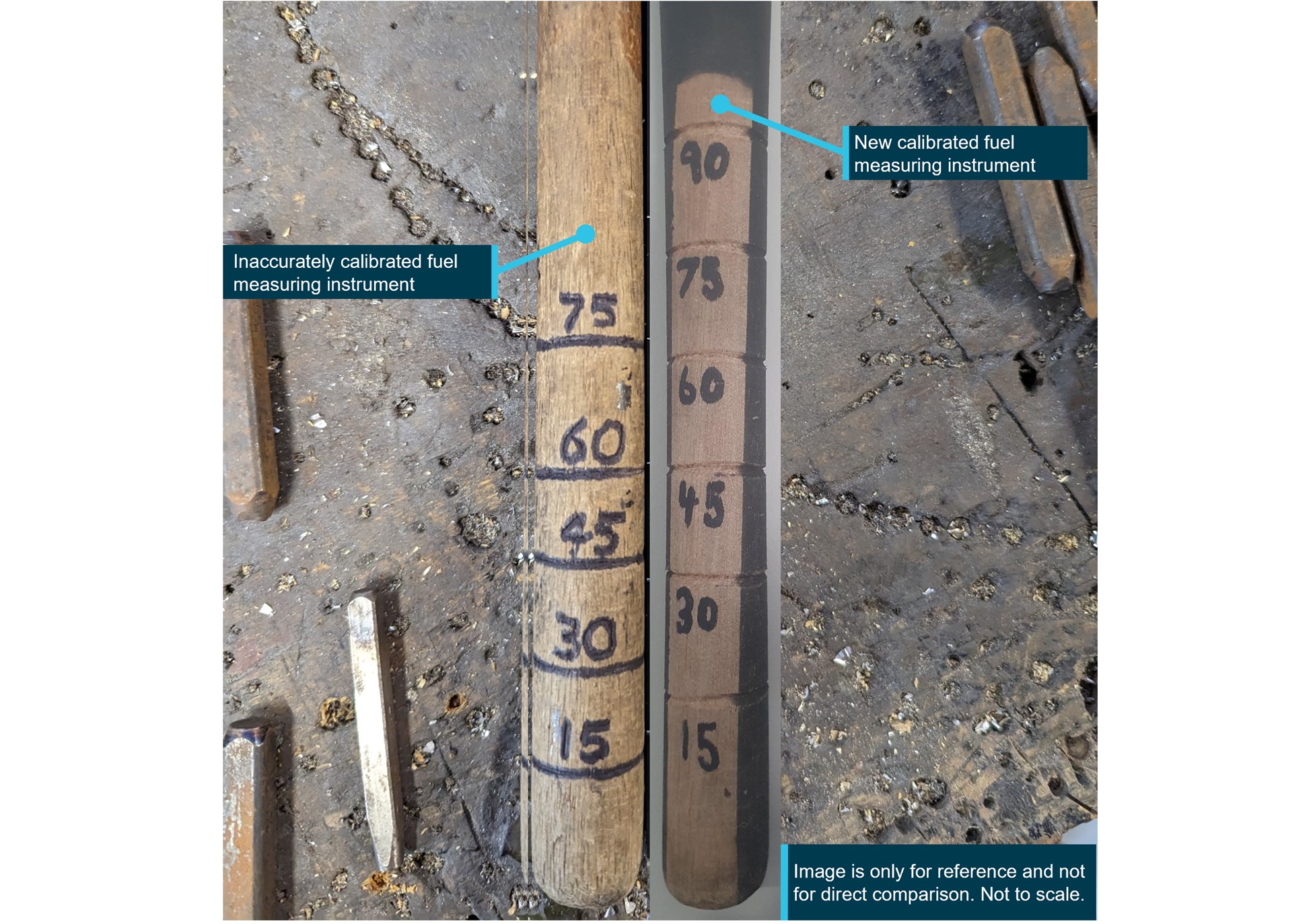What happened
On 11 May 2023, at approximately 1000 Eastern Standard Time, the crew of a Cessna 172M had completed a cross-country instructional flight. During post-flight refuelling, the crew detected that the aircraft had used more fuel than expected. The crew subsequently determined that the aircraft had landed with low fuel and reserves compromised.
The operator’s safety investigation found that the fuel measuring instrument used for pre-flight fuel quantity checks was inaccurately calibrated for the fuel tanks fitted to the aircraft. This resulted in a discrepancy between the fuel measuring instrument reading and actual quantity in each tank.
Safety action
As a result of this occurrence, the operator removed the fuel measuring instrument used for pre-flight quantity checks from service, and had the fuel tanks recalibrated, resulting in a newly calibrated fuel measuring instrument (Figure 1).
Figure 1: Old and New fuel measuring instruments

Safety message
Measuring Instrument calibration
Aircraft owners and operators should ensure that fuel measuring instruments used to determine fuel quantity are accurately calibrated. It is suggested that this verification should coincide with cockpit gauge calibrations performed by maintenance organisations.
Pre-flight fuel quantity checks
Pilots are reminded to cross-check fuel quantity readings through multiple methods. Unless the aircraft fuel tanks are completely full, sole reliance on one method can leave the operation vulnerable to fuel exhaustion or starvation occurrences.
The Civil Aviation Safety Authority (CASA) has published Advisory Circular AC 91-15 - Guidelines for aircraft fuel requirements. CASA recommends the following verification combinations:
- Check of visual readings (e.g. tank tab, dipstick, sight gauges) against fuel consumed indicator readings.
- Having regard to previous readings, a check of cockpit fuel quantity indications or visual readings against fuel consumed indicator readings.
- After refuelling and having regard to any recorded post-flight fuel quantities, a check of cockpit fuel quantity indications or visual readings against the refuelling uplift readings.
- When a series of flights is undertaken by the same pilot and refuelling is not carried out at intermediate stops, checking of the cockpit fuel quantity indications against computed fuel on board and/or fuel consumed indicator readings, provided the particular system is known to be reliable.
About this report
Decisions regarding whether to conduct an investigation, and the scope of an investigation, are based on many factors, including the level of safety benefit likely to be obtained from an investigation. For this occurrence, no investigation has been conducted and the ATSB did not verify the accuracy of the information. A brief description has been written using information supplied in the notification and any follow-up information in order to produce a short summary report and allow for greater industry awareness of potential safety issues and possible safety actions.


